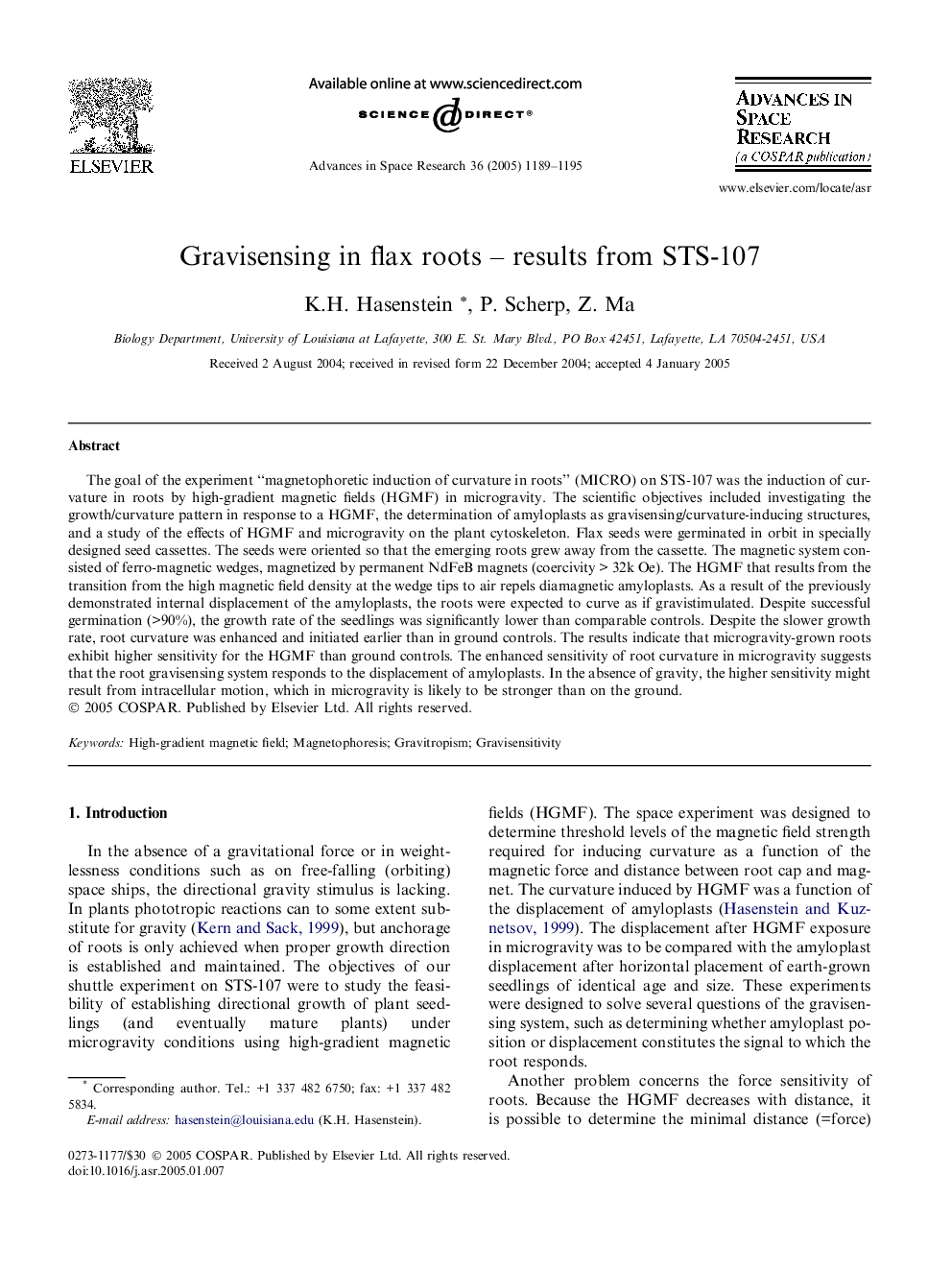| کد مقاله | کد نشریه | سال انتشار | مقاله انگلیسی | نسخه تمام متن |
|---|---|---|---|---|
| 10694686 | 1020239 | 2005 | 7 صفحه PDF | دانلود رایگان |
عنوان انگلیسی مقاله ISI
Gravisensing in flax roots - results from STS-107
دانلود مقاله + سفارش ترجمه
دانلود مقاله ISI انگلیسی
رایگان برای ایرانیان
موضوعات مرتبط
مهندسی و علوم پایه
علوم زمین و سیارات
علوم فضا و نجوم
پیش نمایش صفحه اول مقاله

چکیده انگلیسی
The goal of the experiment “magnetophoretic induction of curvature in roots” (MICRO) on STS-107 was the induction of curvature in roots by high-gradient magnetic fields (HGMF) in microgravity. The scientific objectives included investigating the growth/curvature pattern in response to a HGMF, the determination of amyloplasts as gravisensing/curvature-inducing structures, and a study of the effects of HGMF and microgravity on the plant cytoskeleton. Flax seeds were germinated in orbit in specially designed seed cassettes. The seeds were oriented so that the emerging roots grew away from the cassette. The magnetic system consisted of ferro-magnetic wedges, magnetized by permanent NdFeB magnets (coercivity > 32k Oe). The HGMF that results from the transition from the high magnetic field density at the wedge tips to air repels diamagnetic amyloplasts. As a result of the previously demonstrated internal displacement of the amyloplasts, the roots were expected to curve as if gravistimulated. Despite successful germination (>90%), the growth rate of the seedlings was significantly lower than comparable controls. Despite the slower growth rate, root curvature was enhanced and initiated earlier than in ground controls. The results indicate that microgravity-grown roots exhibit higher sensitivity for the HGMF than ground controls. The enhanced sensitivity of root curvature in microgravity suggests that the root gravisensing system responds to the displacement of amyloplasts. In the absence of gravity, the higher sensitivity might result from intracellular motion, which in microgravity is likely to be stronger than on the ground.
ناشر
Database: Elsevier - ScienceDirect (ساینس دایرکت)
Journal: Advances in Space Research - Volume 36, Issue 7, 2005, Pages 1189-1195
Journal: Advances in Space Research - Volume 36, Issue 7, 2005, Pages 1189-1195
نویسندگان
K.H. Hasenstein, P. Scherp, Z. Ma,